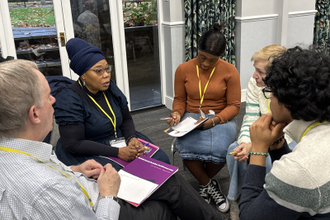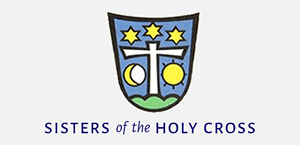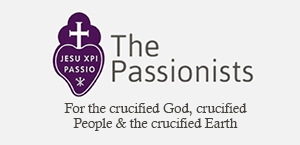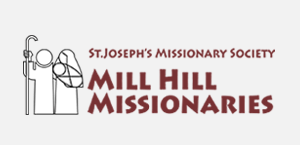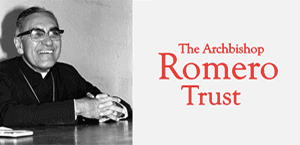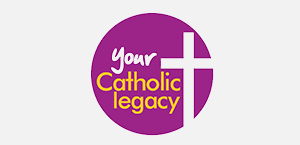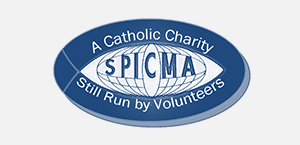Celebration of history at St Mary's University

St Mary's University
St Mary's University, Twickenham, and The Tablet celebrated their respective milestone anniversaries last Friday, with a gathering of academics, theologians, journalists and members of the public at Strawberry Hill, home of St Mary's.
Peter Tyler, Professor of Pastoral Theology and Spirituality, delivered fascinating insights into the place, buildings and artworks of St Mary's, thereby 'reconstructing the 175-year history of this unique institution'.
The current site was situated in that Thameside-stretch between Hampton Court and Richmond Park known as the 'English Arcadia'. The famous picture 'Pope's Villa' by JMW Turner depicts the pastoral loveliness.
Due to the anti-Catholic Penal Laws, Catholics were not allowed to celebrate Mass within a ten-mile radius of central London. Therefore, Catholics like the poet Alexander Pope (1688-1744, who once owned the villa painted by Turner) lived in enclaves in such places as the 'English Arcadia' or Roehampton. Pope of course attracted a whole group of fellow artists and poets. Nightingales sang during the summer nights.
The celebrated Strawberry Hill House was built on the orders of Horace Walpole (1717-1797), pioneer both of the Gothic novel and neo-Gothic architecture, and son of Sir Robert Walpole, the first modern Prime Minister.
The original, undistinguished house was locally known as 'Chopped Straw Hall' but Walpole re-baptised it 'Strawberry Hill' from a name he had found among old title deeds as a more distinctive name for his little 'Gothic castle'. He wrote of his 'satisfaction in imprinting the gloomth of abbeys and cathedrals' in his house which is indeed a feast of the gothic imaginary (despite the disapproval of the strictly orthodox Pugin) and now a UNESCO-listed world heritage site and open to visitors.
Strawberry Hill became the property of the fabulously rich and influential Lady Frances Waldegrave (1821-1879). In the words of The Daily Graphic: 'Frances Lady Waldegrave was one of the last leaders who ruled over the West End World. In her day, Strawberry Hill was the Mecca towards which the eyes of the ambitious would turn with longing looks - for it was there that she held court - and very carefully did she choose her courtiers.' Indeed, it was claimed that Strawberry Hill became 'an annexe to the Foreign Office' during this period.
Professor Tyler paused to consider the draconian repression of Catholics prior to the Catholic Emancipation Act of 1829: "Charles Butler, the first Catholic to be called to the Bar after the Catholic Relief Act of 1791, and the first to be appointed King's Counsel after the Catholic Emancipation Act, thought it best to group these laws under five headings:"
- those which subjected Catholics to penalties and punishments for practising their religious worship;
- those which punished them for not conforming to the Established Church (Statutes of Recusancy);
- those regulating the penalties or disabilities attending the refusal to take the Oath of Supremacy (1559; 1605; 1689), the declarations against Transubstantiation (Test Act, 1673) and against Popery (1678);
- the act passed with respect to receiving the sacrament of the Lord's Supper;
- statutes affecting land and property.
When Catholic Emancipation came - not least due to the huge number of Irish Catholic soldiers in the British army - there was urgent work to be done to improve the lot of Catholics, and this only worsened after the horror of the Irish famine (1845-49) for which the British state was overwhelmingly responsible. Following the establishment of the Catholic Poor School Committee (1847) and a particular and urgent focus on education, St Mary's College was founded at Hammersmith by the Brook Green Brotherhood in 1850 to train Catholic male teachers. (Now it is The Tablet which is to be found at Hammersmith.)
The college was handed to the Vincentians in 1896 and the first Vincentian Principal, Fr William Byrne CM was appointed in 1899, the same year Elgar composed the first version of The Dream of Gerontius based on Cardinal Newman's poem. The Vincentians would remain in control up until the 1980s.
St Mary's moved to Strawberry Hill in 1925 where the property had reverted to a rather sleepy phase in its existence but an exciting century lay ahead. The college chapel was built in 1963 with the glass-makers of Chartres Cathedral providing a complete set of stained-glass windows. It became co-ed in 1966. St Mary's became a full university in 2014.
Many films have been shot at Strawberry Hill which served as the Bishop's Palace when Alec Guinness, playing GK Chesterton's Father Brown, visited his disapproving bishop there. Guinness identified playing the priestly sleuth as instrumental in his conversion to Catholicism.
Further presentations followed from Tablet journalists and academics.
Professor Anthony McClaran, Vice-Chancellor of St Mary's, noted the generations of Catholic teachers who had been educated there and applauded the 'courageous act' of the hierarchy to 'put schools before churches' in the first decades after Emancipation at a time of social deprivation and emergency. He believed St Mary's was living up to that 'inspiring mission' serving society in broader, direct ways. For although the university is Catholic (one of just four in the country), only ten per cent of its student body is - a figure which is mirrored in most secular seats of higher education.
Nevertheless, Pope Benedict XVI who had visited St Mary's, spoke of how the Catholic community is a 'leaven in society'. Stress was placed upon the 'accompaniment of the whole human person', not least through 10 research centres. 'Applied' learning at St Mary's reached out into the wider community to contribute to the common good. Dr Angela Platt provided examples of acting students enriching the lives of the old-aged residents of a local home, learning their stories and playing them back to them. A visual impairment programme had been provided for the artist Turner's House, nearby.
Mary-Ann McClaran, archivist at St Mary's, joked that as a mediævalist she was 'much more comfortable with vellum'. She had rescued the archives from anti-nuclear former World War II bunkers at Bicester where they had been imprisoned for too long. She spoke of sporting successes (St Mary's has several Olympians), the world wars, and other key moments in the university's history, and concluded by quoting Fr Cronin who had been Principal in the centenary year of 1950. He had been reflecting upon an early inspection report of the new college which noted the 'modesty and cheerfulness' of the students, together with 'the great effect of the moral and religious discipline, and its visible effects on their general character and deportment.'
The report concluded: 'Institutions such as St Mary's are designed to call into existence thoughtful, generous and devoted men, comprehending their mission, and amply qualified to accomplish effectively its sacred and difficult duties.' And that, 'An institution conducted with so much wisdom, patience and prudence cannot fail.'
'Whilst the language is very much of its time,' said Mary-Ann McClaran, 'its sentiments still hold firm, setting out the standards that we aim to reach, year on year. And so, if I may echo Fr Cronin's own heartfelt response - 'May this be said too of St Mary's in 2025 and every future year in her history!'
As a footnote, I recall being sent to St Mary's in 2005 as a Staff Writer on The Tablet to go through its archives - held at St Mary's - on the occasion of Pope John Paul II's death. It was wonderful to see fascinating examples from the archives of both institutions on display twenty years later.
The Student Handbook for 1989-1990 caught my eye as it had the Palestinian flag prominently displayed, surrounded by the symbols for the Anti-Apartheid movement, CND, Amnesty International and the LGBT Pink Triangle.
Inside, I learned that St Mary's Student Union was twinned with that of the University of Birzeit in the Occupied West Bank of Palestine. Its students visited their sister campus and reported back on what they had found. A student union motion inside condemned 'Israeli outrages' and oppression of the Palestinian people: 'The blatant violation of fundamental human rights, sadly, is now an everyday occurrence.' Students reported on the destruction of homes, the levelling of orange groves, killings, detention without charge, the tear-gassing of a recently re-opened primary school.
What finer evidence could there be of the application of lessons learned towards a committed accompaniment and solidarity for Justice and Peace?
Tragically, these are yet to be realised.
LINKS
The Tablet: a legacy of learning and influence: www.indcatholicnews.com/news/53789
St Mary's University: www.stmarys.ac.uk/







